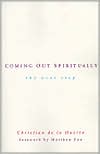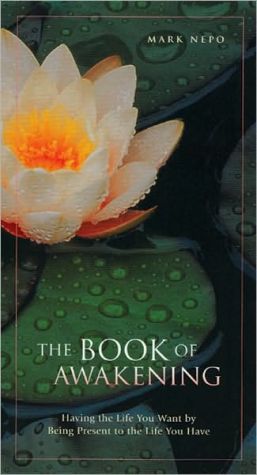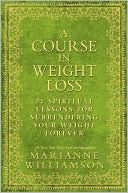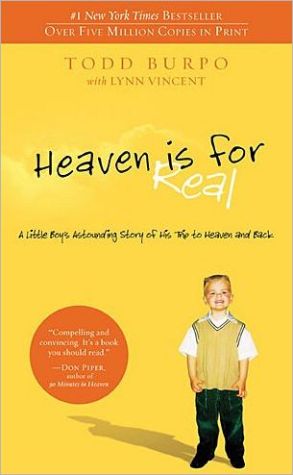Coming Out Spiritually: The Next Step
In these times of dramatic social change, when the highly charged issue of homosexuality is undeniably causing controversy in many arenas—religion, marriage, politics, education, the military—Christian de la Huerta, founder and director of Q-Spirit, offers a fresh outlook on gay spirituality and how to assert it. A spiritual awakening is occurring in the gay, lesbian, bisexual, and transgendered community, as in much of the world. In this encompassing guidebook, de la Huerta looks at...
Search in google:
A spiritual leader in the gay community delivers a clear perspective and an optimistic and ambitious vision of the role gay people can play in the world for the benefit of all. In these times of dramatic social change, when the highly charged issue of homosexuality is undeniably causing controversy in many arenas--religion, marriage, politics, education, the military--Christian de la Huerta, founder and director of Q-Spirit, offers a fresh outlook on gay spirituality and how to assert it. A spiritual awakening is occurring in the gay, lesbian, bisexual, and transgendered community, as in much of the world. In this encompassing guidebook, de la Huerta looks at Buddhism, Christianity, Judaism, Hinduism, Taoism, Sufism, New Thought, New Age, and Earth-based religions, including Native American. Cogently investigating these traditions' attitudes, teachings, and policies toward homosexuality, the author gives the queer reader a foundation from which to begin building a spiritual connection. Coming Out Spiritually also synthesizes ten spiritual roles or archetypes people we now call gay or queer have often assumed and continue to enact today: creators of beauty, consciousness scouts, mediators, shamans, and healers, among others. Drawing on these models while acting as a guide to the queer community, the author shows how to look deeper inside; to reach higher than ever before; to step forth more fully into a rightful self. An impassioned call to action, Coming Out Spiritually alternatively touches, challenges, encourages, and supports the queer community to fully reclaim its spiritual heritage. Publishers Weekly For many years, de la Huerta contends, gays and lesbians have been forced by organized religion to separate their sexual identities from their spiritual identities. The resulting spiritual fragmentation, according to the author, has been devastating to the gay community. De la Huerta, the founder and executive director of Q-Spirit, an international network of gays and lesbians focusing on spirituality, encourages "queers" (a term he uses to refer to gays, lesbians, bisexuals and transgendered people, in spite of its offensiveness to some people) to engage in "practical experimentation" of their spirituality. He states that his "desire is to inspire a sense of wonderment, purpose, service, and mission in the gay community. It is now time for us to consciously reclaim and reinvent the roles we have played." To that end, his first chapter names 10 roles that queers have historically played, arguing that the spiritual function and value of these roles need to be recognized. For example, de la Huerta notes that, throughout history, queers have played the role of shaman and priest. He lists several examples of ancient religious functionaries, such as the female agule ("like men") and the male okule ("like women") mediums of the Lugbara tribe of East Africa. In his second chapter, de la Huerta explores various methods--yoga, meditation, psychotherapy, Qi Gong and the labyrinth--that enable a person to encounter his or her own spiritual depths. Chapter three focuses on sexuality as an expression of spirituality. "When we learn to reunite sex and Spirit in our lives," he says, "we will experience change and healing beyond our wildest dreams." In the final chapter, de la Huerta contends that coming out spiritually is a culmination of the journey of self-discovery. He notes that coming out means healing old wounds and moving beyond old identities as spiritually fragmented victims to embrace oneself as one really is: "empowered, compassionate, loving, ready to make a difference in the world, and fully able to embrace the totality of life." Appendices offer an overview of the world's spiritual traditions, a resource guide of spiritual organizations and a list of books, audios and videos. De la Huerta's beautifully crafted prose and his passionate desire to help queers come out spiritually mark this book as an extraordinary achievement. (June) Copyright 1999 Cahners Business Information.
\ \ \ \ \ Chapter One\ \ \ Walking Between Worlds\ \ \ Introduction: Reclaiming Our Spiritual Heritage\ \ \ I looked up at the room filled with two hundred delegates from all over the world, many dressed in their religious or cultural garb. Slowly, I lifted the pieces of hand-written, ruled paper and realized my hands were shaking. Yet I knew that there was no going back—I had crossed the point of no return. I began to read, a little nervously at first, but then with increasing power, emotion, and conviction.\ Just a week before, I had received an invitation to take part in a global summit for the United Religions Initiative, an effort spearheaded by Bishop William Swing of the Episcopal Diocese of Northern California. During the previous year, he had traveled all over the world and met with dozens of spiritual leaders in a campaign to create the United Religions, an organization parallel to the United Nations with the purpose of establishing dialogue and peace among the world's religions. I was invited to Grace Cathedral to meet with Charles Gibbs, the president of the Initiative, who informed me that my name had been given to him as someone who might be interested in attending the conference and possibly writing about my experience. I responded that I would be honored to participate, with the understanding that I would be representing Q-Spirit, a nonprofit organization which I had founded to promote personal growth and spiritual development in the gay/lesbian/queer community. Gibbs's response was immediate: "Sure. Come on down."\ Over the next couple of days, asI prepared for the conference—packing, completing projects, and rescheduling appointments—I kept thinking about a story Gibbs had told me about the regional conference in Buenos Aires, Argentina, which had taken place a few months prior. Apparently, the issue of sexual orientation had become a prominent focus of discussion and controversy during those proceedings. Somewhere in the back of my mind I thought that perhaps, if the opportunity presented itself, I would need to address that issue. But only if no one else tackled it first.\ The procedure each morning was the same. We'd start out with an invocation, prayer, or meditation led by representatives from different traditions. That morning, Masankho Banda, a young man from Africa, engaged us with a song in his native tongue. By the time he finished, the entire room was enlivened and energized. Five or six others moved toward the front of the room to make announcements. John Hamilton, the conference production manager, began by saying, "Now we move from the spectacular to the mundane," and proceeded to share with us some logistical information about our day. As I waited nervously, allowing the others to go before me, one of the organizers zoomed in on the papers I was holding, leaned over and asked, "You are going to make an announcement, right?" To which I replied, "Yes." The gatekeeper pressed, "And it's going to be brief, right?" Again I replied, "Yes," adding to myself, "Well, brief is relative." Finally, the last person spoke. The moment of truth had arrived. I stood up, grabbed the mike, and walked slowly to the center of the room. I unrolled the papers in my hand and raised them up to eye level. The papers, unsupported by a podium, were shaking. The choice had been made. There was no turning back. I said, "Now we move from the spectacular to the mundane to the controversial. I am going to make an announcement, but before doing so I feel it necessary to read a few words." And I began:\ \ \ First of all, let me be very clear in stating that I am aware that the most important priority of this conference is—and should be—the creation of a United Religions working together toward world peace. That is why I'm here. However, there is another reason I'm here, and I would not be true to myself if I didn't take this time to address an issue which I feel needs to be acknowledged in this conversation.\ Just a couple of days ago, I was told a story about the Buenos Aires Regional Conference, which preceded this Global Summit. In one of the small group processes striving to design the mission and values of a United Religions charter, a discussion ensued about tolerance—about who should or should not be included in a United Religions. As the participants came back together for the large group reports, the elected speaker, a minister from the Metropolitan Community Church in Buenos Aires, reported that his group had reached consensus that no one should be excluded because of their faith, their ethnicity, their national origin, their gender, their age, their political beliefs, etc. In fact, there was only one area where they had been unable to reach agreement—and that was sexual orientation. He then handed the microphone to another representative from their group, who stood up and said that his religion did not allow him to entertain that possibility, but that in discussing it, his mind had been expanded and now had new material to consider. I think that's great, even hopeful, but from my perspective, it's just not good enough.\ I am here as an unofficial ambassador from a tribe of people belonging to every culture and faith in the world—people who share a love for others of the same sex—those who in the West call ourselves, gay, lesbian, bisexual, or simply, queer. There isn't another group of people in this world which has been, and continues to be, as universally maligned, as universally repudiated, as universally excluded, as universally condemned, as universally excommunicated, and yes, even eliminated by some of the religions of the world.\ The ironic, and tragic, thing is that before patriarchal times, back when women and the Divine Feminine were honored, before we entered this present period of our history several thousand years ago when, somehow, we got this mistaken idea that there was only one name for the Creator, one way to speak with and worship the Divine—and that we were entitled to use violence and military power to impose our beliefs on the rest of the world, that we were entitled to kill each other in the name of God—before these times gay and sexually ambiguous people were often spiritual leaders.\ We were the shamans, the healers, the visionaries, the mediators, the peacekeepers, the "people who walk between the worlds," the keepers of beauty. The berdache or Two-Spirit people of the Native American tribes—the winkte of the Lakota, the nadle of the Navaho, the minquga of the Omaha, the hwame of the Mohave—as well as the isangoma of the Zulu and the "gatekeepers" of the Dagara in Africa, the hijras in India, the galli priests of the goddess Cybele in ancient Europe and the Middle East, and many others, were honored, respected, and even revered for the spiritual roles they fulfilled.\ I am here today to remember the tens of thousands and probably millions of women loving women and men loving men who have been killed throughout history because of who they were. I come here, though, not from a place of victimization, but rather, one of empowerment. I am here to announce to you, as representatives of the world's cultures and religions, that we are reclaiming our natural, our sacred, our archetypal, and yes, our God-given role of spiritual leadership.\ Today at lunch a group of us will sit together in the dining room. We would like to invite anyone—regardless of faith, ethnicity, national origin, gender, age, or sexual orientation—to share a meal with us.\ \ \ I had no idea what to expect. To say that I was surprised by the response could not begin to capture the drama of the moment. Suddenly, I was being embraced and kissed. I looked around briefly and realized that some people were clapping, others were crying, and some were beginning to stand. The statement was receiving the first, and the most intense, standing ovation of the entire week!\ DeAnna Martin, a beautiful, bright, twenty-one-year-old bisexual from Seattle with whom I'd connected a couple of days earlier, was one of the first. As we held each other, we both burst into tears. A young man in his twenties, whom I sensed was dealing with sexual-identity issues, also embraced me. As he pulled away, he pecked me very subtly on the cheek, whispering, "Thank you. You'll never know how much you helped me." And there was Rosalía Gutierrez, from the Cholla tribe in Argentina, who came over in her multicolor Indigenous dress and long black braids: "Thank you for doing what you did; you created the space for others to do the same. When you go out and tell others about this experience, ask them to remember us Indigenous people. Ask them to stop the evangelization. Tell them that we don't wish to be evangelized. For if you do away with our traditions, who will tell you about the Earth or remind you of nature?"\ Later, I was told that about 80 percent of the audience had stood, while 20 percent remained sitting and did not clap; one person actually walked out and left the conference. My personal experience was one of overwhelming support—no one approached me directly with any negativity. I was a bit concerned about how Bishop Swing would respond, since I had somewhat derailed the process that morning, and possibly, in his eyes, opened a can of worms. That evening I bumped into him as we waited in line to get something to drink at the closing reception. Having gotten his drink, he turned around, and suddenly we were looking into each other's eyes, no more than a foot apart. "Oops," I thought. With piercing blue eyes staring right into mine, he said, "Young man, what you did this morning required a lot of courage; I could see your hands trembling. I want you to know that I'm very glad that you were here and did what you did. I also want you to know that I've probably ordained more gays and lesbians than the rest of the Anglican church put together. And if you ever want to be a priest, call me."\ Back home in San Francisco, I soon realized that in some fundamental way I'd never be the same. I also understood that the occasion would likely prove to be pivotal for Q-Spirit. The vision for the organization was expanded, its impetus augmented. Initially, I had hoped it would assist gay men to explore different spiritual paths by creating a forum where we could come together and learn from each other. Then the mission grew to include the queer community as a whole. Our hope was, and is, to increase our collective level of self-acceptance, while alleviating our collective internalized homophobia, by helping us to reclaim our spiritual heritage and giving us a sense of hope, a sense of our history, a sense of our self-worth. As a result of the URI experience, I saw that Q-Spirit could also serve as a vehicle for change in the world at large. The organization could potentially fulfill more of an activist role by helping to educate people globally about our heritage and our cause. Given that most of the roots of homophobia lie in religion, this felt like an important effort.\ What is lacking in the queer community—both among individuals and collectively—is a real sense of self. It's no wonder, given the rejection, ostracism, and abuse many of us have experienced because of the homophobia still rampant in the world. But while we must continue to relentlessly chip away at the strongholds of sexism, racism, and homophobia, complete societal acceptance, if at all possible, is still years away. Addressing the internalized homophobia at the root of many of our emotional problems and dysfunctional behaviors is now crucial. We can no longer afford to look for acceptance only in external sources but must first find it in ourselves. We must take care of ourselves and of our own.\ One of the reasons why so many in our community lack a sense of identity is because we have attempted to reject intrinsic parts of being human, parts essential to a sense of wholeness. Many gays and lesbians have attempted to reject their sexuality—a tragic and fruitless endeavor as ludicrous as waking up one day and deciding that one no longer needs to breathe, because someone, somewhere, decreed that breathing is an evil, sick, sinful, or immoral act. Many have also tried to shed their spirituality, an act equally ludicrous, for our spirituality is as innate a part of being human as breathing and as natural as our sexuality. To quote a saying common these days in spiritual circles: "We are spirits having a human experience."\ One problem is that so many confuse religion and spirituality. And no wonder gays and lesbians have turned off to religion: Throughout history we have been condemned, excommunicated, tortured, even burned at the stake for our sexuality. Even today, in the expanded consciousness of the late twentieth century, many "religious" folks still regard queer people as pariahs and abominations. Fear of the "homosexual agenda" is constantly invoked by unscrupulous and hypocritical preachers in order to extend the insidious grip of their ministries and to line their pockets with untold millions of dollars. Sadly, in modern-day America, political careers are still made or broken depending on where a politician stands on the "issue" of homosexuality.\ Because of the prejudice, intransigence, and abuse we have experienced in churches, temples, and mosques, many queer people have felt compelled to radically break away from the traditional religions in which we were raised. Attempting to define our identity and find a place for ourselves in the world, we have often thrown the baby out with the baptismal water. Many of us have rejected our inherent spiritual natures along with the religious traditions we felt forced to disavow in order to accept our sexual nature.\ Now we must in turn reclaim our spiritual natures. Realizing that spiritual life is simply part and parcel of all human experience, we need to rediscover, reframe, and reinvent ways to express our spirituality, ways that are appropriate and right for us. Being spiritual can be radically different from being religious. The former implies a personal connection with something greater than ourselves, whether we call that something God, Goddess, Spirit, the Universe, the Tao, Allah, Buddha, Higher Power, Higher Self, or one of the countless other names used by people all over the world. To many, the latter smacks of social and historical manipulation, and the abuse of power and wealth. It reeks of politics and lies.\ Evidence abounds that historically, particularly before the rise of the patriarchy, queer people formed an intrinsic part of religious structures, often assuming roles of spiritual leadership. That was one of our functions in early tribal societies, and among Indigenous peoples even up to the present. It is time for us to educate ourselves about those traditions, reclaim our innate right to spiritual experience, and reinvent its expression.\ Where do we come from? What are we? Where are we going? These questions were the title of a Tahitian-themed 1897 painting by Paul Gauguin, and were later echoed by Harry Hay: "Who are we as gay people? Where do we come from, in history and in anthropology, and where have we been? What are we for?"\ What I know is that each and every one of us holds within him- or herself indescribable potential, and that our community as a whole contains vast, untapped resources. We must search deeper than we ever have before, and reach higher than we ever have before, to discover who we really are, what we are here for on this planet, and what contributions we are here to make. The time is now. As the forces of freedom and oppression, of love and fear, continue to polarize the world, we must each choose who we are and how we want to be. The first step in discovering who we are as gay people is to look back throughout history and attempt to determine who we have been and what roles we have played. Among many Indigenous cultures, homoerotically inclined or gender-variant individuals were recognized, honored, and occasionally even feared for their roles as spiritual leaders. These humans were considered to bridge the male and female worlds and were at times thought of as a third gender, believed to be imbued with special powers. They were also said to walk between the worlds of matter and spirit.\ I have distilled and synthesized the following roles that gay people have fulfilled for millennia, which could all fall under the broader category of "spiritual functions." Some are variations of each other and occasionally overlap.\ \ \ 1. Catalytic Transformers: A Taste for Revolution\ 2. Outsiders: Mirroring Society\ 3. Consciousness Scouts: Going First and Taking Risks\ 4. Sacred Clowns and Eternal Youth: A Gay, Young Spirit\ 5. Keepers of Beauty: Reaching for the Sacred\ 6. Caregivers: Taking Care of Each Other\ 7. Mediators: The In-between People\ 8. Shamans and Priests: Sacred Functionaries\ 9. The Divine Androgyne: An Evolutionary Role?\ 10. Gatekeepers: Guardians of the Gates\ \ \ Catalytic Transformers: A Taste for Revolution\ \ \ Queer people often function as catalysts, acting as agents of change, helping to bring about reform, inciting social movements, and supporting the advancement of humanity.\ \ \ A catalyst is an "agent that stimulates or precipitates a reaction, development, or change." At first reminiscent of auto mechanics, I use the term "catalytic transformer" to refer to the propensity among many queer people to function as catalysts, to bring about reform, to incite social movements, to transform society, to be instruments or agents of change. How can social activism be classified as a spiritual role? Social activists often propel the evolution of humanity toward a more enlightened, evolved, and compassionate way of being. As Jesus exemplified, the role of spiritual teacher sometimes involves bringing down the "sword of truth" and smashing ignorance, lies, injustice, and social conditioning.\ Even a brief analysis of recent history yields an appreciation of how involved queer people have been as catalysts for social evolution. The feminist movement, to begin with, is deeply indebted to lesbians, who comprised an integral part from its inception. As such, lesbians have played an indispensable role in helping to bring about the beginning of the reversal of thousands of years of misogyny and oppression of women. Some of the founding mothers of the suffragist movement were women-loving women, of which Susan B. Anthony and anthropologist Ruth Benedict are examples. An early leader of the women's movement and an advocate for many other social causes, Eleanor Roosevelt represents another prototype of the queer social activist.\ From the '50s to the '70s, the Beat movement had a distinct gay presence. According to Cassell's Encyclopedia of Queer Symbol, Myth, and Spirit, during the Beat scene "bisexuality or homosexuality became interwoven with radical left politics and a spiritual vision linking elements of Buddhism, Hinduism, Christianity, Judaism, and Sufism." Among the gay or bisexual "beatniks" were William S. Burroughs, Allen Ginsberg, Neal Cassady, Jack Kerouac, and Peter Orlovsky.\ Likewise, the hippie culture of the late '60s was influenced by gay people. Originating in San Francisco's Haight-Ashbury neighborhood—then a neighborhood with a substantial gay presence—the "flower children" were unquestionably impacted by the gay culture of the time. For example, Judy Grahn indicates that expressions such as "`straight,' meaning not us, others; `blow your mind,' meaning to produce an altered state of consciousness through hallucinatory drugs; and `what a drag,' meaning bad time or bad happening," penetrated the hippie language via gay tongues.\ Many gays and lesbians were also intricately involved in the civil rights movement. In fact, it was a gay African-American, Bayard Rustin, anti-nuclear activist, pacifist, folk singer, and one of Martin Luther King, Jr.'s closest advisers, who organized the momentous 1963 March on Washington for Jobs and Freedom, which culminated in the historic "I Have a Dream" speech.\ And although many consider their modus operandi controversial, few would dispute the effect Act Up! has had in the battle against AIDS.\ Additionally, many gays and lesbians are involved in the ecology movement. In fact, it was a lesbian scientist, Ellen Richards, who helped institute the science of ecology and was instrumental in the passing of the Pure Food and Drug Act. Marine biologist Rachel Carson, whose innovative work triggered significant environmental legislation, is also considered one of the pillars of the environmental movement. Her books, such as Silent Spring, exposed how the abuse of insecticides desecrates the environment.\ More recently, Seattle resident Ruth Baetz wrote Wild Communion, an inspirational and practical guide—particularly for urban dwellers—urging them to develop or deepen their relationship with nature, even while living in the frantic pace of city life. Baetz believes that gay people have a particular need to learn how to commune with nature, because so many of us have become disenfranchised from our families, societal support structures, and organized religions. As she toured the U.S. promoting her book, she experienced a disproportionate number of gay people showing up at her events and sharing a deep concern about environmental issues.\ Of particular interest here is Andrew Ramer's "channeled" information that one of the sacred functions of gay men in prehistoric times was that of "Guardians of the Trees." As a young child, Ramer began hearing voices in his head, and fairly soon realized that not everyone heard them. Not only that, but he discerned that those who did were considered "crazy." While coming out as a gay man in the '70s, he began a process of spiritual self-discovery, as he sought answers to the perpetual questions of "Who am I?" and "Why am I a man who loves men?" After years of unsuccessfully attempting to quiet or ignore the voices in his head—voices he eventually identified as those of spirit guides and angels—he once again tuned in and began to discover answers to many of the questions that had plagued him. Whatever one may think about the source of channeled materials, there is much in Ramer's work that rings true. Ramer suggests that trees mirror gay men energetically, not the least of which is the fact that trees embody both female and male aspects—that they are, in fact, androgynous. Through one of his spirit guides, Ramer extols gay men to "take the lead ... in becoming foresters, reforesters," to plant trees and join organizations that plant trees as "part of our work in the healing of the planet."\ Poet James Broughton brings our role as social activists and revolutionaries explicitly into the spiritual realm: "That is why we have to start a revolution. And soon! Not a revolution that waves banners and assassinates presidents. Ours will not be a revolution that marches into the streets or blows up public buildings. This is an inner uprising and overthrowing; this is the revolution in the souls of all of us. This is the realization of our oneness, our love, and our strength."\ In Part 2 we will explore different practices and techniques for "coming in," ways through which we can support that "inner uprising" of which Broughton speaks. In order for us to fully enact our role as catalytic transformers and sacred revolutionaries, it is important that we first clean up our own side of the street, looking within and seeing what areas are in need of attention. In Part 4 we will "come back out" and explore different avenues for action, ways in which we can make a difference in our lives and in the world.\ \ \ Outsiders: Mirroring Society\ \ \ As outsiders, queer people help society to more accurately perceive itself. We reflect diversity and help society determine its limits and boundaries.\ The second role we often play is that of reflecting diversity, holding up a mirror so that in its reflection society can better see itself. Judy Grahn believes that society does in fact use gay people for this purpose: "We are closely watched to see what constitutes the limit of a thing—too far out, too much, too low, too bad, too outrageous, too soft, too dangerous, too rough, too cultured, too aggressive, too sexual ... We are essential to them knowing who they are."\ In order to serve this important reflective function, and have perspective on a given situation, one must have a certain distance from it. Having "outsider status" is thus intrinsic to being able to see the bigger picture, the forest from the trees. This quality is what makes so many queer people good observers and chroniclers of society, why we excel as writers, filmmakers, historians, and journalists.\ How often we read in the news about ways in which gay men and lesbians are testing the limits. We always seem to be pushing the envelope, seeing how far we can take things. Even within our community, this creates controversy. When a couple of retail shops in the Castro designed sexually explicit window displays for Halloween in San Francisco in the fall of '97, a heated discussion took place about pornography, decency, and the right to freedom of speech and self-expression. One store flaunted a poster featuring, in full-frontal majesty, the erect penis of a well-endowed porn star advertising an event. The same image had also been dispersed all over the Castro in the form of thousands of promotional cards. Another had placed a couple of Billy Dolls, also very well endowed, in a variety of graphic sexual positions. What later became known as the "Great Penis Debate" was triggered by an editorial written by the straight editor of a local gay publication, expressing shock at being bombarded by penises all over the Castro as she walked to work. The controversy intensified when the principal of the Harvey Milk Elementary School in the Castro wrote a letter to the owners asking them to cover up their window for their students' annual walking tour of the Castro's Halloween window displays. In San Francisco, where the concept of political correctness can sometimes be taken to the extreme, what followed was a barrage of letters to the editor from both sides—those advocating "decency," concerned with how this would reflect upon the gay community at large, and those fiercely defending freedom of expression. Eventually a community meeting was called to discuss the issue, and the controversy was picked up by the mainstream media. On one level we can interpret this as yet another example of the assimilation versus liberation debate; on another, we can see how the discussion prompted society to look at an issue and attempt to delineate what constitutes societal limits.\ Anthony Turney, former Executive Director of the Names Project and ordained deacon at Grace Cathedral Episcopalian Church in San Francisco, compares gays to lightning rods, in the sense that we force the world to look at things that it usually doesn't wish to deal with, and in the process attract attention and controversy. But it is above all in the sexual arena that we force the world to evaluate itself. Legitimizing homosexuality, by extension, makes all sexuality valid for its own sake rather than for procreative purposes only. That is but one of the reasons why we are so controversial and why the road to equality and acceptance has been and will likely continue to be a tortuous one.\ Besides helping to define sexual limits, other areas in which we are currently prompting reexamination are the institutions of marriage and the military. The possibility of gay marriage is forcing society to ask some pertinent questions about that practice. Is marriage merely a heterosexual, patriarchal construct, developed out of the need to establish paternity and property, including that of wife and children? If so, how will the function marriage serves be impacted as our society moves back toward gender equality? And what about polygamy—the "next, you'll have to accept that too" argument used by opponents of gay marriage to instill fear of the impending collapse of civilization should gay marriages come about? These are profound and—to many—scary questions, with important social, religious, economic, and political implications. No wonder gays are feared and despised. We truly represent a threat to the status quo simply by being who we are.\ In nature, and in all of life itself, we witness constant cycles of birth, death, and rebirth, what Robert H. Hopcke, author of Jung, Jungians, and Homosexuality, describes in terms of building up and decaying or breaking down. He points out that the breaking down or destructive process is a crucial one, one without which new life or growth could not occur. His thesis is that "the outsiders, the androgynes, the people who break the boundaries—in other words, gay people in our culture—serve a very vital function in that second half of the cycle, in the breaking down and dissolution." It is because of that, he asserts, that lesbians and gay men are often found at the vanguard of creative pursuits, "since we are the people who break down and let something new come in. That's the function we serve and that's why we're here." The down side to that role, however, is the risk of becoming associated with the cycle of death and decay. He cites the merging in much of the world's mind between gay men and AIDS, in spite of the fact that there are many more heterosexuals infected with the virus. But because gay people are the ones who "dissolve the various myths in our culture," we are threatening to and attacked by many fundamentalists and other reactionary and dogmatic enemies of change.\ Jamake Highwater's The Mythology of Transgression is a brilliant and eloquent analysis of the phenomenon of outsiderhood—of people who stand outside of society's boundaries for whatever reason: their appearance, ethnic heritage, beliefs, or the book's specific focus, sexual orientation. The author weaves together a wide range of sources, from physics, biology, and anthropology to psychology, literature, and the arts, as well as his own triple-outsider status (as an orphaned Native American gay artist) to explore how mythologies—both past and present—have tinted the way our society views issues like normality, alienation, and social transgression.\ \ \ People who exist at the margins of society are very much like Alice [in Wonderland]. They are not required to make the tough decision to risk their lives by embarking on an adventure of self-discovery. They have already been thrust beyond the city's walls that keep ordinary people at a safe distance from the unknown. For at least some outsiders, "alienation" has destroyed traditional presumptions of identity and opened the mythic hero's path to the possibility of discovery. What outsiders discover in their adventures on the other side of the looking glass is the courage to repudiate self-contempt and recognize their "alienation" as a precious gift of freedom from arbitrary norms that they did not make and did not sanction. At the moment a person questions the validity of the rules, the victim is no longer a victim.\ \ \ Outsider status can serve to clarify one's perceptions and deepen one's ability to understand and empathize with others. Indeed, Highwater confides that he has "always seen [his] separateness as the basis of a cherished freedom from constraints, preconceptions, and social expectations."\ There are at least two challenges presented to an outsider. Falling beyond the margins often results in a "unique and powerful vision of the world inaccessible to insiders," but there is also a risk involved. As Highwater points out, learning to turn alienation into something positive, dealing with hatred without letting it turn into self-contempt, is not an easy task.\ We don't need to be astute observers of human behavior to realize that many in the gay community carry old wounds and internalized self-hatred, which can manifest as bitchiness, "attitude," ostentatiousness, and pretense. Often, these are defense mechanisms, ways of compensating for feelings of inadequacy, self-contempt, and internalized homophobia. This is one of those areas where we obviously have our work cut out for us. Though perhaps understandable, attacking each other and failing to take care of our own, rather . than supporting each other and standing together in the face of external and very real adversity, is tragic, to say the least. As most of us know or at least intuit, acceptance and compassion begin at home: Our ability to accept others is a direct function of the degree to which we accept ourselves.\ A second challenge to our outsider role, which a number of queer thinkers and leaders have pointed out, is the danger inherent in "assimilation." As we become more and more accepted and assimilated into the culture, perhaps one day even becoming part of the mainstream, do we risk losing the edge and perspective provided by our outsider status? As psychiatrist Richard Isay, author of Being Homosexual: Gay Men and Their Development, expresses it, "Being gay is an adventure because there are no guidelines for living our lives. We make them up as we go along. Sometimes I wonder what will happen when society is more accepting. Will we then become bound by convention? Life wouldn't be as challenging. I like being a renegade."\ (Continues...)
Foreword by Matthew Foxxi Prefacexvii 1 Walking Between Worlds1 2 Coming In45 3 The Faces of Passion87 4 Coming Out123 Appendix 1170 Appendix 2209 Appendix 3215 Bibliographical Notes222 Index231
\ Publishers Weekly - Publisher's Weekly\ For many years, de la Huerta contends, gays and lesbians have been forced by organized religion to separate their sexual identities from their spiritual identities. The resulting spiritual fragmentation, according to the author, has been devastating to the gay community. De la Huerta, the founder and executive director of Q-Spirit, an international network of gays and lesbians focusing on spirituality, encourages "queers" (a term he uses to refer to gays, lesbians, bisexuals and transgendered people, in spite of its offensiveness to some people) to engage in "practical experimentation" of their spirituality. He states that his "desire is to inspire a sense of wonderment, purpose, service, and mission in the gay community. It is now time for us to consciously reclaim and reinvent the roles we have played." To that end, his first chapter names 10 roles that queers have historically played, arguing that the spiritual function and value of these roles need to be recognized. For example, de la Huerta notes that, throughout history, queers have played the role of shaman and priest. He lists several examples of ancient religious functionaries, such as the female agule ("like men") and the male okule ("like women") mediums of the Lugbara tribe of East Africa. In his second chapter, de la Huerta explores various methods--yoga, meditation, psychotherapy, Qi Gong and the labyrinth--that enable a person to encounter his or her own spiritual depths. Chapter three focuses on sexuality as an expression of spirituality. "When we learn to reunite sex and Spirit in our lives," he says, "we will experience change and healing beyond our wildest dreams." In the final chapter, de la Huerta contends that coming out spiritually is a culmination of the journey of self-discovery. He notes that coming out means healing old wounds and moving beyond old identities as spiritually fragmented victims to embrace oneself as one really is: "empowered, compassionate, loving, ready to make a difference in the world, and fully able to embrace the totality of life." Appendices offer an overview of the world's spiritual traditions, a resource guide of spiritual organizations and a list of books, audios and videos. De la Huerta's beautifully crafted prose and his passionate desire to help queers come out spiritually mark this book as an extraordinary achievement. (June) Copyright 1999 Cahners Business Information.\ \ \ \ \ The AdvocateAlongside the usual stuff about shamans and healing powers, there's some new, interesting material on the spiritual archetypes enacted by homosexuals and about traditional religions' attitudes toward gays.\ \








